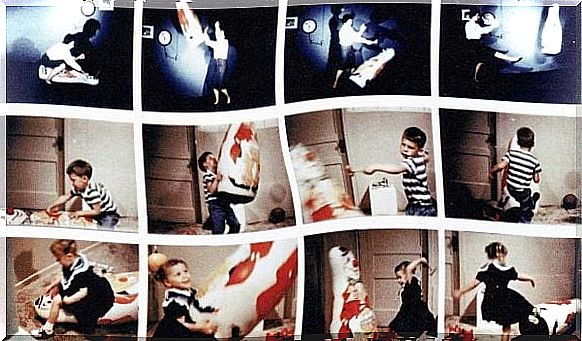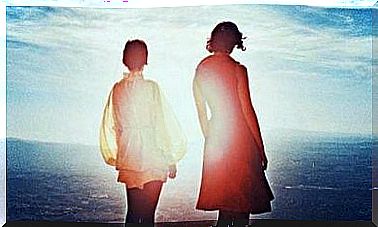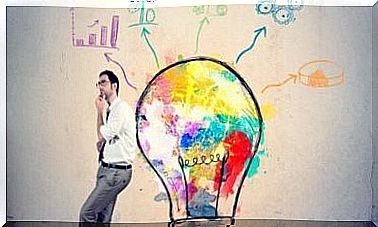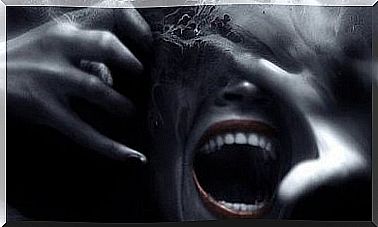Social Learning: The Interesting Theory Of Alberto Bandura

How do we learn about people? Understanding what mechanisms, gears, and complex subtleties trigger behavior or skills has always been one of the goals of psychology. Albert Bandura introduced the theory of social learning, a theory about the interaction between the mind of the learner and his environment.
Most of us have no idea how children learn. Some people still see learning or acquiring a particular skill as the result of the classical behavioral approach, something based on imitation, conditioning, and positive or negative reinforcement.
However, nothing is more intricate, complex, and fascinating than a student’s mind, a child’s brain, or an adult’s ability to generate certain behavior or acquire specific knowledge. None of us is an empty box to be filled based on external pressures and constraints. People observe, imitate, develop in a certain social environment and at the same time have certain mental limitations or advantages that hinder or support their ability to learn.
Albert Bandura, a Canadian psychologist and professor at Stanford University, has delved deeper into these issues to shape his social-cognitive learning theory. It is an approach where behavior and cognition meet. This is called social learning.

What does this social cognitive learning theory tell us?
Within Bandura’s social learning theory concepts such as ‘observational learning’ or ‘modelling’ are central. We’ll give you some background information to add a little more context to our story.
It all started in the 1960s, a time when behaviorism carried a lot of weight and learning was regarded simply as giving and receiving information from expert to learner. One shared information and the other received it. In other words, the expert had an active role and the learner a passive one.
Albert Bandura, on the other hand, looked beyond behavioral reductionism to the field of the social. Lev Vygotsky, with his sociocultural theory, also belonged to this group. Bandura said children learn certain lessons quickly without trial and error. If so, there was one important reason for this: observation and social environment.
The Bobo doll and social learning
The Bobo doll experiment is one of the best known in the field of psychology. Between 1961 and 1963, Bandura and his team tried to demonstrate the importance of observational learning in children and to show that the imitation of a model – an adult – is much more important for children than just giving or omitting reinforcement.

- The experiment involved children aged three to six who attended the nursery at Stanford University. The image was shocking. In a room full of toys, an adult smashed a doll with a large wooden mallet in front of a group of children. In another experimental group, the adult represented a non-aggressive model. For a third group, the aggressiveness was accompanied by insults to the doll.
- The results couldn’t be clearer. Most children exposed to the aggressive model were more likely to act physically aggressive themselves. This is in contrast to the children who were not exposed to this model.
Bandura has shown that there are three basic forms of observational learning :
- Through a live model, as a real person exhibiting behavior.
- Via a verbal instruction: Describe details and descriptions of certain behavior.
- Symbolic method: fictional characters from a book or movie. A real person whose behavior is transmitted through the media also counts here.
Processes that mediate social learning
The theory of social learning is often described as a ‘bridge’ between traditional learning theory (e.g. behaviorism) and the cognitive approach. Bandura, unlike Skinner, always attached great importance to mental (cognitive) factors in the learning process. He stated that people who learn actively process information and also actively assess the relationship between behavior and its consequences.
Therefore, we should not make the mistake of thinking that people imitate everything they see, and that all children are guaranteed to engage in aggressive behavior by observing this type of behavior at home or on television. Thoughts precede imitation. In addition, there are mediators who will encourage the imitation or an alternative response.
Here are some of these mediators:
Area
Our society is not completely homogeneous. On the contrary, it consists of and also produces the most diverse environments and scenarios. Some are more beneficial and others are more oppressive.
Let’s look at an example. Carlos is eleven years old and has a new violin teacher this year. In the beginning he was fascinated by the instrument. He wanted one, to learn more about it. His father , however, quickly and constructively talked him out of this idea. “That’s nonsense!” he cried. Since then Carlos has lost interest in the violin.

Attention
Determined to imitate behavior, it must attract our attention, interest and mirror neurons. We all observe different behavior day in and day out. However, not all of this behavior is equally important or worthy of us.
Motivation
Motivation is the motor, the will to show certain behavior that we see in others.
- Now we need to talk about vicarious learning. According to Bandura, just ‘observing’ what others do is not enough. We also need to see what rewards others get for that behavior or what consequences they have to deal with.
- If the perceived rewards outweigh the perceived costs (if any), the observer will imitate it. On the other hand, if the vicarious reinforcement is not considered important enough to the observer, then he will not imitate the behavior.

Finally
The theory of social learning was one of the most interesting qualitative leaps in psychology. In fact, we can still say that Albert Bandura, at the age of 91, is one of the most esteemed and decorated personalities in this area.
Thanks to him we understand better how we acquire knowledge and generate certain behavior. We see how the external – the social – is related to our internal processes – the cognitive – and how we also often serve as a model for other people in our environment, without realizing it.
Bibliography
Bandura, Albert, (1987) “Social Learning Theory“, Espasa Libros
Bandura, Albert and Walters, Ruchards, (2004) “Social Learning and Personality Development“, Paidos.








